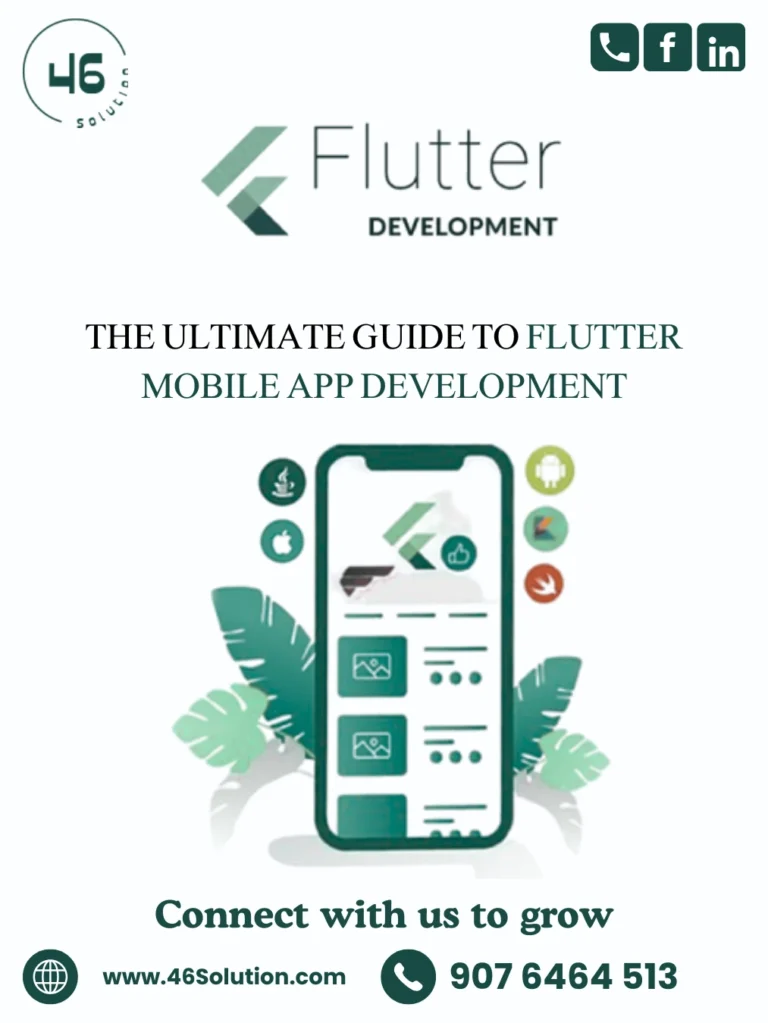
In the fast-evolving digital landscape of 2025, mobile app design is no longer just about aesthetics—it’s about creating seamless, cross-platform experiences that engage users instantly. Flutter, Google’s open-source UI toolkit, has emerged as a revolutionary framework for developers and designers alike. It enables the creation of beautiful, natively compiled applications for mobile, web, and desktop—all from a single codebase.
This blog explores how Flutter is transforming app design in 2025, highlighting its advantages, design capabilities, and why it stands out as the go-to tool for modern app development.
1. The Rise of Flutter in 2025
Flutter has steadily become the developer’s favorite choice across the globe. In 2025, its adaptability, performance, and rapid updates have positioned it as a core framework for startups and enterprises alike. The reason behind its growing dominance is simple—speed, flexibility, and beautiful UI outcomes.
Developers can now launch fully functional apps faster than ever while maintaining pixel-perfect design across Android, iOS, and even desktop platforms. This speed-to-market advantage makes Flutter indispensable in today’s competitive digital era.
2. One Codebase, Multiple Platforms
One of Flutter’s biggest strengths is its single codebase approach. Gone are the days when developers needed to write separate code for Android and iOS. With Flutter, you build once and deploy everywhere—mobile, web, desktop, and even embedded devices.
This unified framework not only saves time but also ensures consistent user experiences across all platforms. It allows designers and developers to focus on creativity and performance rather than redundant coding.
3. Stunning UI with Flutter’s Widget System
Flutter’s widget-based architecture is the magic behind its visually appealing interfaces. Everything in Flutter—from buttons and menus to layouts and animations—is a widget.
In 2025, Flutter’s advanced widget library allows developers to craft interfaces that are both aesthetic and functional, blending seamlessly with brand identity. The Material Design and Cupertino libraries further enable app designs that look perfectly native on both Android and iOS.
Designers love how easily they can customize themes, transitions, and components—ensuring apps look elegant and consistent across devices.
4. Hot Reload: A Game-Changer for Designers
Flutter’s Hot Reload feature remains a favorite among developers. It enables real-time updates to the code without restarting the entire app.
This is especially beneficial in 2025’s fast-paced development cycles, where teams need quick design iterations. Designers and developers can experiment with colors, layouts, animations, or UI tweaks and see the results instantly—boosting productivity and creativity.
5. Flutter’s Performance and Efficiency
Flutter apps aren’t just visually rich—they are incredibly fast and efficient. The framework compiles directly to native ARM code, ensuring high performance with smooth animations and minimal lag.
Unlike traditional cross-platform solutions, Flutter doesn’t rely on intermediate layers or web views, resulting in near-native performance. This means apps built in Flutter not only look premium but also run flawlessly—a must-have quality for 2025’s demanding users.
6. Growing Ecosystem and Community Support
Flutter’s ecosystem has expanded rapidly. Thousands of plugins, packages, and third-party tools are available to enhance app development.
In 2025, the Flutter community continues to innovate—introducing better integrations, enhanced APIs, and cutting-edge tools that make development smarter. From Firebase support to AI-driven design plugins, Flutter’s ecosystem is evolving to empower developers at every step.
7. Flutter and the Future of App Design
As app design trends move toward minimalism, fluid animations, and immersive user experiences, Flutter stands at the forefront of this evolution.
Designers can bring concepts to life with expressive motion, interactive transitions, and adaptive layouts—all powered by Flutter’s robust rendering engine. Its design flexibility ensures that brands can offer users truly engaging and future-ready experiences.
8. Why Businesses are Choosing Flutter in 2025
In 2025, businesses are prioritizing speed, scalability, and visual excellence—all of which Flutter delivers. Whether it’s for startups aiming for quick MVP launches or established companies seeking UI perfection, Flutter helps reduce costs and development time without compromising quality.
Its compatibility with major backend frameworks, smooth API integration, and extensive design freedom make it an all-in-one solution for next-gen digital products.
Conclusion
Flutter is redefining app design and development in 2025. With its unified codebase, high performance, and beautiful UI capabilities, it’s helping developers and designers build apps that are both visually stunning and technically superior.
For anyone looking to create next-gen digital experiences, Flutter isn’t just a framework—it’s a creative powerhouse.


